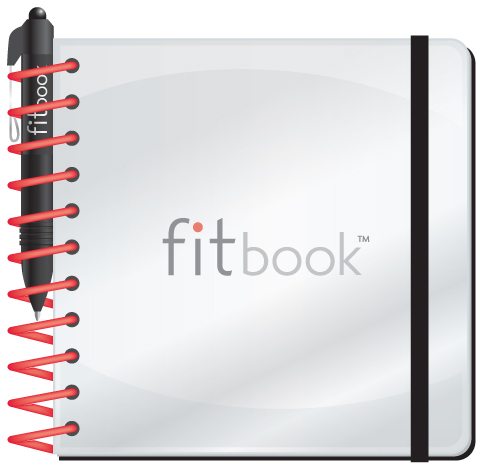The term whole grain has become a lot more complicated than it sounds. A quick walk down the cereal aisle of the grocery store would make you believe that practically every packaged product is made from whole grains. This is not the case – and not all whole grain products are created equal. Here’s what you need to know when shopping for cereal.
Statements like these don’t mean much:
“Now made with whole grains!”
“10 grams of whole grains in every serving”
“Includes whole grains in every bite!”
These types of claims usually appear on the least nutritious sugar cereals like Lucky Charms, Cinnamon Toast Crunch, Trix, etc. While these cereals do include some sort of whole grain, they are are not 100% whole grain and don’t contain much heart healthy fiber – plus they’re still loaded with sugar.
Processed Whole Grains vs. “Intact” Whole Grains
Some cereals are made from whole grains that have been ground into flours and combined with thickeners, flavorings, vitamins, and other ingredients during the cereal-making process. These cereals may still be very healthy, but anytime you heavily process something you lose some of the nutritional benefits. Studies have shown that “intact” grains – grain kernels that are eaten in their pure form – are better at lowering cholesterol and maintaining heart health than highly processed whole grains. Here are a few (tasty!) cold cereal options made from intact whole grains:
- Uncle Sam (ingredients: whole wheat kernels, flax seed, salt, barley malt)
- Erewhon Crispy Brown Rice (ingredients: organic brown rice, barley malt, sea salt)
- Bob’s Red Mill Meusli (ingredients: whole wheat, dates, sunflower seeds, raisins, whole grain rye, whole grain barley, whole grain oats, whole grain triticale, flaxseed, almonds, walnuts)
- Kashi Autumn Wheat (ingredients: organic whole wheat, organic sugar, natural flavor)
- Kashi Simply Maize (ingredients: organic corn, organic sugar, salt, organic molasses)
- Barbara’s Shredded Wheat (ingredients: 100% whole wheat)
How to Pick Out a Healthy Cereal
There are many kinds of whole grains – wheat, oats, corn, brown rice, rye, barley, quinoa, etc – that can be turned into hot and cold cereals. Thus you have many delicious whole grain cereal options to choose from. Aim to buy and try a variety of cereals, so you get a wide variety of nutrients from these tasty grains. Here’s what to look for when shopping for a cereal:
- At least 3 grams of fiber per 100 calories (so if a cereal has 200 calories per serving, it should have at least 6 grams of fiber) – this is a sign that the cereal is truly whole grain
- 6 or less grams of sugar per serving (cereals with raisins or other dried fruit will have more, which is OK)
- Organic or natural brands that are made with responsibly grown ingredients (the word “natural” on a food label doesn’t mean much, but many brands in the natural foods sector offer healthier cereals made with healthier ingredients)
- Some other healthy cereals I recommend







8 Comments
Craig
December 4, 2014 at 6:05 amThe only grocery store with in 20 miles of our office is a small town econo-box. (20,000 sf). They don’t carry Uncles Sam, Barbara or Kashi.
We get Post and Kellogg. I’m currently lunching a 50/50 mix of Post Great Grain and Kellogg Original All Bran. I throw a couple raisins in the mix also. 2% milk.
Any suggestions on a healthier alternative, that I might still be able to get at the local store? I don’t mind mixing my own.
I’d appreciate any help you could offer.
Amelia Winslow
December 4, 2014 at 11:41 amI think the cereals you’re selecting are good options, given your grocery store constraints. Shredded Wheat is also a good option, since it’s very simple, ingredients-wise. Regular hot oatmeal or other hot cereal would also be good options.
Organic Pasta, cereals and pulses
December 20, 2014 at 2:32 amA classic breakfast, delicious and nutritional. Good recommendation!
Berniece McCormick
March 24, 2015 at 7:12 amWhat whole grain cereals can I expect to be able to purchase at a Kroger store?
Amelia Winslow
March 25, 2015 at 1:11 pmMost of these would be available at Kroger, Berniece!
Mark
November 17, 2015 at 8:14 amGrind 1 lb corn into flour (do not use corn meal, it is not whole grain).
Add 2 cups oatmeal.
Add 1/2 cup brown sugar, 1 tbsp cinnamon, 1 tsp salt, 1 tsp baking powder and a cup of water.
Press it into a cookie sheet, roll it flat.
With a pastry cutter, cut small (1″ or smaller) squares.
Cook at 400F for 15 min, then lower temp to 300, cook for another hour to make crunchy.
Remove from oven, cool, break into pieces, store in a bag.
I do this every weekend, sometimes I use whole wheat instead of corn.
Steven Rafferty
December 31, 2015 at 8:56 pmIs percentage of whole grain in a cereal important? I would think so. I don’t recall seeing a percentage listed on most of the organic cereal packages that I buy, and I don’t find percentages given for my favorite organic cereals brands on their makers’ web pages. So maybe it is unrealistic to expect even the better cereals to give this figure? If not unrealistic what percentage should I reasonably expect and where do I find the number? Thanks!
Amelia Winslow
January 1, 2016 at 8:55 amHi Steven – great question. I personally don’t look for the percentage of whole grains, because a truly healthy cereal will be 100% whole grain. If the brand is mixing in other refined grains (rice flour, starches, enriched flour, etc) then the cereal is likely heavily processed and not very high in whole grains. Look for whole, intact grains in the ingredients list, and make sure that the first few ingredients are whole grains, not sugars, and you’ll be good to go!